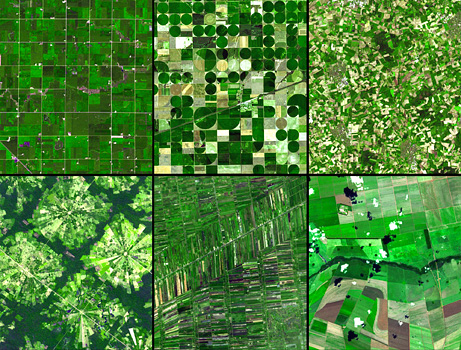I’ve just come across two Flickr groups which are intensely interesting from an agrobiodiversity perspective. Flickr is a photo sharing site, and I have in fact blogged about it before here, for example on how it could be used to map crop diversity. The two groups bring together photos taken in markets, with a lot of fruits and vegetables featured. As with my previous post on tomatoes, have a look at the mapping option in particular. A great time-waster, but I bet it could be used to look at geographic patterns in vegetable diversity in markets.
Agricultural biodiversity weblogger awarded prize
Our friend, colleague and occasional contributor Andy Jarvis has just won GBIF’s prestigious Ebbe Nielsen Prize for 2009 for “combining biosystematics and biodiversity informatics research in an exciting and novel way”. A lot of his work has been on the spatial analysis of the geographic distributions of crop wild relatives, with a view to developing strategies and priorities for their conservation, in particular in the context of climate change. A lot, but far from all: Andy is nothing if not versatile, and his interests extend to the whole of agrobiodiversity. A recent interview with Andy, and others, tries to answer the question “why maps?”. Congratulations to Andy!
Mapping Ugandan wetlands to protect them
Want to know where Ugandans can make the most money from harvesting papyrus? Here you go:

This map is one of a whole series on Ugandan wetlands — their potential and the threats they face — that has just been published by the World Resources Institute ((In collaboration with Uganda’s Wetlands Management Department, the Uganda Bureau of Statistics, and the International Livestock Research Institute.)) under the title Mapping a Better Future: How Spatial Analysis Can Benefit Wetlands and Reduce Poverty in Uganda.
One of the co-authors, Paul Mafabi , commissioner of the Wetlands Management Department in Uganda’s Ministry of Water and Environment, had this to say at the launch:
These maps and analysis enable us to identify and place an economic value on the nation’s wetlands. They show where wetland management can have the greatest impacts on reducing poverty.
There are probably some wild rice relatives lurking in these wetlands too, let’s not forget.
Organic farms mapped
There are 10,159 organic farms in the US ((Or there were in 2007, the date of the most recent agricultural census.)) and, unlike farms in general, they are distributed around the country in a series of distinct hotspots. I know this because the NY Times did its usual wondeful graphics number on the USDA’s numbers. I wonder what Paul Krugman would have to say about these particular business clusters.

LATER: Oops, too fast on the old “Publish” button. If I’d waited to go live with the above until after browsing through my feed reader, I could have added that Food & Water Watch have a complementary map of factory farms in the US. Which I found out about via a story in the Atlantic Food Channel that was actually about something different, the global provenance of food.
LATER STILL: Alas, the map of organic farm distribution bears more than a passing resemblance to that for greed. Kinda.

Happy Mayday

Like patchwork quilts, satellite views of farming patterns around the world form the above montage of images taken by the Terra satellite.
At top-left, a regular grid pattern suggests that agriculture was shaped by 19th-century surveying in Minnesota. Meanwhile, center-pivot irrigation in Kansas is responsible for the circles visible in the second image. A well in the middle of each field serves as a pivot point for wheeled, spraying watering machines.
In the top-right image of northwest Germany, small and disorganized fields can be traced back to the less-planned farming of the Middle Ages.
Curious pie-shaped fields in the lower-left image are the result of a planned settlement near Santa Cruz, Bolivia. At the center of each field is a village, while a buffer of rain forest separates each community.
In Thailand, at bottom-center, rice paddies just outside Bangkok form skinny slices. The purple fields are flooded, a normal part of rice’s life cycle.
At bottom-right, Brazil’s woodland-savanna cerrado contains massive farms, a by-product of the flat land’s inexpensive price.
Many thanks, NASA and National Geographic.